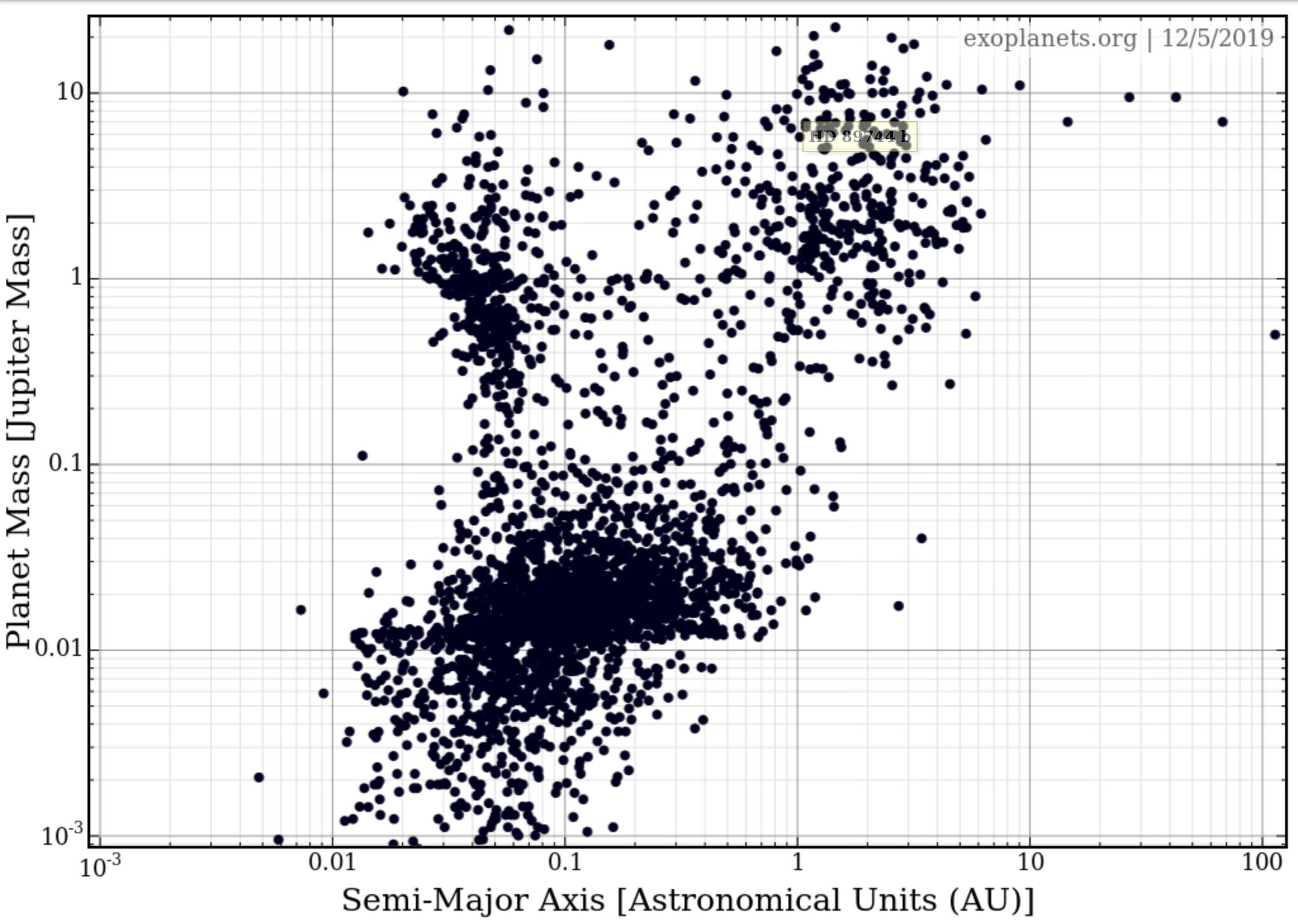Giant planets like Jupiter form through accretion in the outer part of the disk, beyond the frost line where the material is cool enough for volatile icy compounds to remain solid. These planets cannot form closer to their host star, since there is there is not enough matter in the protoplanetary disk at smaller radii.
Due to interactions with other planetesimals and the protoplanetary disk itself, the orbit of the young planets changes. This is planetary migration. Interactions with the protoplanetary disk cause planets to migrate inwards. This migration occurs rather fast, so we don't see many Jupiter mass planets at intermediate distance from their star.
The protoplanetary disk is somewhat doughnut shaped. When a migrating planet reaches the inner edge of the doughnut, the sum of forces exerted on the planet change which halts the migration.
This is why there are two clumps in the diagram, for Jupiter-mass planets. One clump (i.e. cold Jupiters) where these planets form, and one clump (i.e hot Jupiters) where they end up after migrating, but nothing in between.
